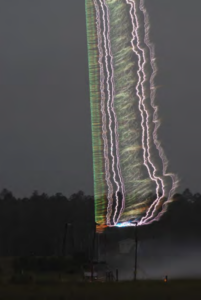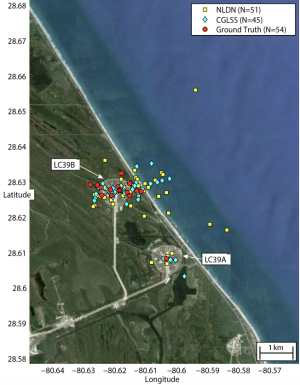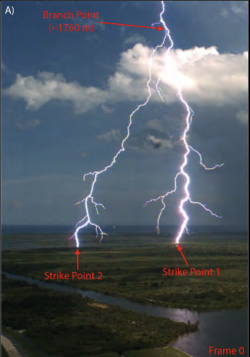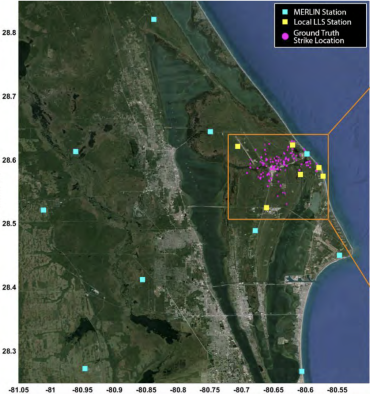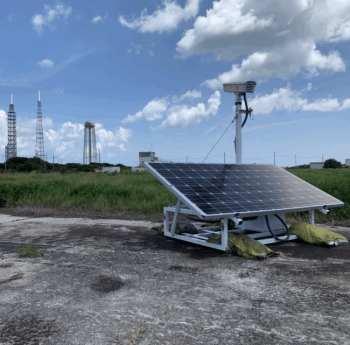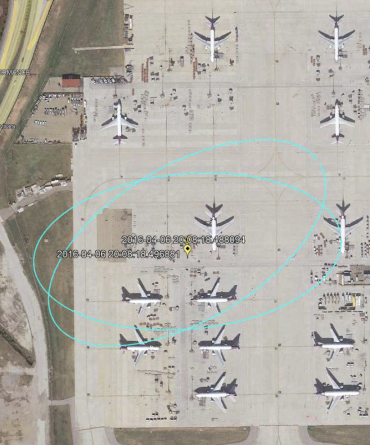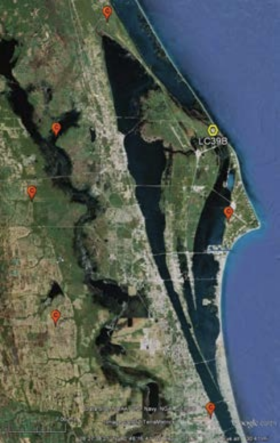Publications
Explore Our Featured Publications
Scientific Lightning Solutions (SLS) actively participates in major academic and industry conferences related to lightning physics, lightning protection, and grounding where the latest research and information are exchanged among scientists and engineers from around the world. Some of our publications are provided below.
NEW TRIGGERED LIGHTNING TESTING CAPABILITIES AT THE INTERNATIONAL CENTER FOR LIGHTNING RESEARCH AND TESTING (ICLRT)
Scientific Lightning Solutions (SLS) has partnered with the University of Florida with the purpose of conducting real lightning testing operations at the International Center for Lightning Research and Testing (ICLRT).
EVALUATION OF THE PERFORMANCE CHARACTERISTICS OF THE CGLSS AND NLDN SYSTEMS BASED ON TWO YEARS OF GROUND-TRUTH DATA FROM LAUNCH COMPLEX 39B, KENNEDY SPACE CENTER, FL
Over the course of 26 months, the lightning instrumentation at Launch Complex 39B (LC39B) at the Kennedy Space Center, Florida, has obtained high-speed video records and field change waveforms (dE/dt and three-axis dH/dt) for 54 negative polarity return strokes whose strike termination locations and times are known with accuracy of the order of 10 m or less and 1 µs, respectively.
CLOSE OBSERVATIONS OF FORKED AND UPWARD-ILLUMINATION RETURN STROKES AT THE KENNEDY SPACE CENTER/CAPE CANAVERAL AIR FORCE STATION
A total of 232 well-resolved multiple ground contact flashes were recorded via high-speed video at the Kennedy Space Center (KSC)/Cape Canaveral Air Force Station (CCAFS) during 2014 and 2015.
EVALUATION OF THE PERFORMANCE CHARACTERISTICS OF MERLIN AND NLDN BASED ON TWO YEARS OF GROUND-TRUTH DATA FROM KENNEDY SPACE CENTER/CAPE CANAVERAL AIR FORCE STATION, FL
Over the course of 5 months, a local lightning locating system at Cape Canaveral Air Force Station (CCAFS)/Kennedy Space Center (KSC) recorded high-speed video images and wideband rate of change of electric field waveforms for nearby lightning return strokes with accurate strike termination locations and times of the order of 10 m and 100 ns, respectively.
MERLIN Low Detection Efficiency Study Results: First Two Years
The Mesoscale Eastern Range Lightning Information Network (MERLIN) provides continuous lightning detection and location information for the Kennedy Space Center and Cape Canaveral Space Force Station. Weather officers at the 45th Weather Squadron utilize MERLIN data to advise space launch providers of potential lightning-related hazards preceding and during launch operations. Ground-truth data (high-speed optical and electromagnetic field measurements) were acquired in 2020 and 2021 totaling 129 strokes to tall structures and 3431 strokes to nearby ground.
PERFORMANCE EVALUATION OF NON-CONVENTIONAL LIGHTNING PROTECTION SYSTEMS BASED ON NLDN DATA
Charge Transfer Systems (CTS) are nonconventional lightning protection devices that, according to vendor specifications, prevent lightning from terminating within a defined area. The devices have been installed at facilities around the world in lieu of traditional Franklin rod lightning protection systems. Two prominent CTS installations in the United States are at the Browns Ferry Nuclear Plant and the Memphis FedEx World Hub. Historical NLDN data from 1995 – 2019 are analyzed for these two sites to illustrate whether the vendor claims of lightning prevention are, in fact, accurate. Ground-stroke densities are computed in areas where CTS are installed versus those without CTS to determine if there is a statistically significant difference that could be attributed to DAS installation.
EVALUATION OF THE PERFORMANCE CHARACTERISTICS OF CGLSS II AND U.S. NLDN USING GROUND-TRUTH DATA FROM LAUNCH COMPLEX 39B, KENNEDY SPACE CENTER, FL
A new comprehensive lightning instrumentation system has been designed for Launch Complex 39B (LC39B) at the Kennedy Space Center, FL. This new instrumentation system includes seven synchronized high-speed video cameras, current sensors installed on the nine downconductors of the new lightning protection system (LPS) for LC39B; four dH/dt, 3-axis measurement stations; and five dE/dt stations composed of two antennas each.


